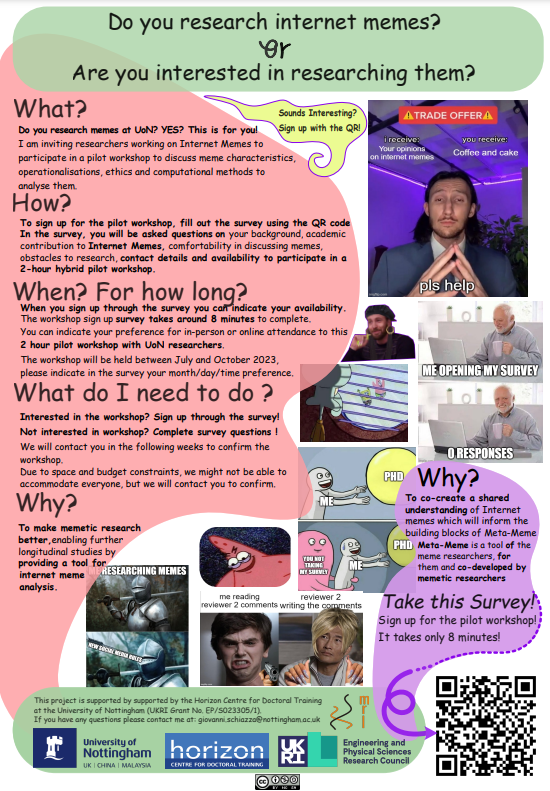post by Giovanni Schiazza
Call for Participants: Affect Recognition Using Passive Data
Hi everyone!
We are running a study exploring patterns of passive phone and PC usage associated with different emotional states. We are aiming to gather subjective emotional levels, as well as phone and PC data, during one or two weeks. All of the data collected is anonymised and follows GDPR guidelines.
The study is funded by Horizon DER, and it is open to anyone above 18 years who has an Android phone or Windows PC. Participants will be offered £50 Amazon voucher for participating one week, with additional 30£ for a second week if they wish to continue.
Before the study begins, you will have to attend a 30-min online call to set up the experiment.
For more information or to participate in this study, please contact:
Dr Mercedes Torres Torres or Jimiama Mafeni Mase at emotion.study.uon@gmail.com
Thank you!
Jimiama Mafeni Mase (2018 CDT cohort)
PhD candidate
Dr Mercedes Torres Torres (2010 CDT cohort)
Assistant Professor
Computer Vision Lab and Horizon Research Institute
Podcast – Creating an Autistic Space
Jenn Layton Annable (2020 cohort) is researching the intersection between gender, autistic experience, and self-identity.
Jenn joins Hanna Bertilsdotter-Rosqvist on the podcast by AutSpace to discuss how terminology, the choice of words, is essential in the process of creating an autistic space. Another important feature is the unusual internal sensory differences that Jenn experiences.
In the talk, Jenn refers to an article called Sensory Strangers. This is a chapter in the book Neurodiversity Studies: A New Critical Paradigm published by Routledge which Jenn is a co-writer of.
If you are interested in reading the article you can find it here.
Whole Brain Emulation (WBE) and the Creation of a Substrate Independent Mind (SIM)
Angela Thornton (2019 cohort), who is partnered with Carboncopies Foundation, had the opportunity to give a presentation at the Foundation’s Journal Club this past weekend.
Angela talked about her doctoral thesis which looks at Whole Brain Emulation (WBE) and the Creation of a Substrate Independent Mind (SIM). After her presentation, Angela took questions on WBE.
Angela’s presentation:
https://www.youtube.com/watch?v=lyXLMGKV72Q
A Reflection on The Connected Everything and Smart Products Beacon Summer School 2020
post by Cecily Pepper (2019 cohort)
My first summer school started with an invite via email. Despite my interest in the topic, my first thought was that robotics was not my area of expertise (coming from a social science background), so maybe I shouldn’t bother applying as I’d be out-of-my-depth. Although after some consideration, I thought it would create some great opportunities to meet new people from diverse backgrounds. So, I stopped worrying about my lack of knowledge in the area and just went for it; and I got a place!
The summer school was held digitally due to COVID-19 restrictions, which had both its benefits and pitfalls. On the first day, we were welcomed by Debra Fearnshaw and Professor Steve Benford, and were then given the opportunity to introduce ourselves. From this it was apparent that there was a wide variety of delegates from several universities, with a range of disciplines including social sciences, robotics, engineering and manufacturing. The first day mostly consisted of talks from experts about the challenges we face in connecting technology and the potential of co-robotics within the fields of agrirobotics, home and healthcare. The main task of the summer school was to create a cobot (collaborative robot) that could overcome some of the issues that COVID-19 has created or exacerbated. The issue that the group chose to address had to fall into one of the categories introduced on the first day: food production (agrirobotics), healthcare or home. Along with this challenge, more details were needed on function, technological components, and four key areas of the cobot design: ethics, communication, learning and safety. These aspects were introduced on the second day. After being split into groups at the end of the first day, I felt happy as my group had a range of experience and expertise between us, which I felt would bode well for the challenge as well as being beneficial for myself as I could learn something from everyone.
Similarly, the second day consisted mostly of talks, this time based on the four themes mentioned previously. The ethics discussion was interesting and included in-depth explanations around aspects to consider when reflecting upon the ethical consequences of our designs, such as privacy, law, security and personal ethics. An online activity followed the ethics talk but was soon interrupted by a technical glitch. Despite this, we were able to engage with alternative resources provided in order to reflect upon the ethics of our cobot design. This was useful both for our eventual design, as well as applying this to our own PhD research.
The other themes then followed, including a discussion around interaction and communication in technology. This was an insightful introduction to voice user interfaces and alike, and what the current research is focusing on in this field. While fascinating on its own, it was also useful in thinking about how to apply this to our cobot design, and which features may be useful or necessary for our cobot’s functionality. A talk on the third theme of learning was then delivered, including details about facial recognition and machine learning, and the applications of these in the field of robotics. Likewise, this was useful in reflecting upon how these features may be applicable in our design. Finally, the theme of safety was considered. This talk provided us with the knowledge and ability to consider safety aspects of our cobot, which was particularly apt when considering COVID safety implications too. Overall, the first two days were quite lengthy in terms of screen time (despite some breaks), and I found myself wilting slightly towards the end. However, I think we could all understand and sympathise in the difficulty of minimising screen time when there is a short space of time to complete all of the summer school activities.
On the final day, we split into our teams to create our cobot. This day was personally my favourite part of the summer school, as it was fantastic to work with such a variety of people who all brought different skills to the group. Together, we developed a cobot design and went through the themes from the previous day, ensuring we met the design brief and covered all bases. Probably the biggest challenge was keeping it simple, as we had so many ideas between us. Despite our abundance of ideas, we were strict with ourselves as a group to focus and keep the design simplistic. Additionally, the five-minute presentation time meant that we had to keep our design simple yet effective. We then presented our home assistant cobot, Squishy. Squishy was an inflatable, soft cobot designed to assist carers in lifting patients who were bed-bound (as occupational injuries are a significant problem within the care industry). Squishy’s soft design enabled comfort for the patient being lifted, while the modular design provided a cost-effective solution and the possibility of added-extras if necessary. Along with this, Squishy was beneficial in that it consisted of wipe-clean surfaces to enable effective cleaning in light of COVID-19, as well as aiding social distancing by reducing the need for carer-patient contact. Other features of Squishy included machine-learned skeletal tracking and thermal cameras to aid safe functionality, and minimal personal data collection to maintain ethical standards. After the presentations and following questions, the judges deliberated. Results were in…my team were the winners! While I was happy to have won with my team, the most fruitful part of the experience for me was meeting and learning from others who had different backgrounds, perceptions and ideas.
Overall, I felt the summer school was well-organised and a fantastic opportunity to work with new people from diverse backgrounds, and I was very glad to be a part of it. I’m also pleased I overcame the ‘Imposter Syndrome’ feeling of not believing I would know enough or have enough experience to be a valuable delegate in the summer school. So, my advice to all students would be: don’t underestimate what you can contribute, don’t overthink it, and just go for it; you might end up winning!
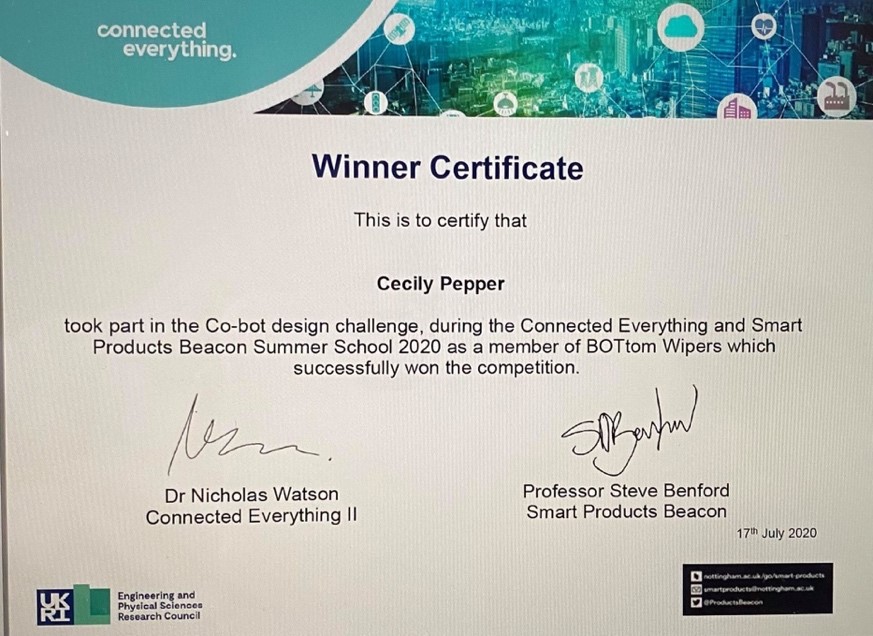
COBOT Collaboration for Connected Everything Summer School
post by Angela Thorton (2019 cohort)
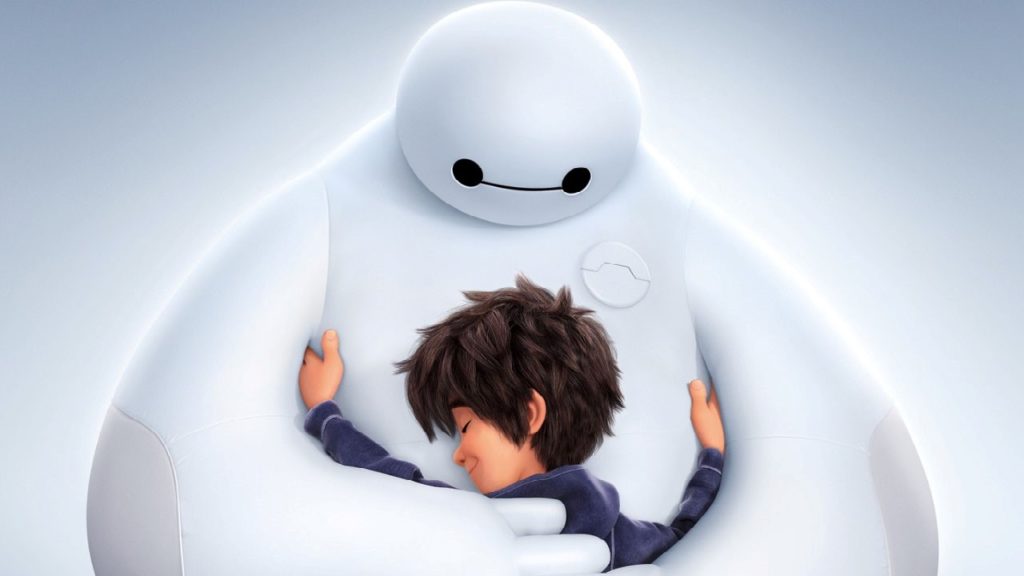
Say hello to Squishy initially inspired by Baymax (Hall, D., Williams, C. 2014). This COBOT concept was co-created during an intensive online Summer School in July 2020 run jointly by Connected Everything and the Smart Products Beacon at the University of Nottingham.
The online event, running over two and a half days, involved 28 delegates from various UK universities and culminated in a brief to design a COVID-ready COBOT (collaborative robot) to work in either Food Production, Healthcare, or the Home. Squishy was the collaborative brainchild of myself and the other five members of my group – the BOTtom Wipers… The group comprised me and Cecily from the 2019 cohort at Horizon CDT and Laurence, Hector, Siya and Robin from Lincoln, Strathclyde, and Edinburgh/Heriot-Watt universities, respectively.
The day and a half leading up to the design brief set the context through a series of related talks on the challenges of working in the different sectors as well as discussions on core aspects such as Ethics, Interaction and Comms, Learning and Safety. Hence by Friday morning, we were ready for our design challenge – to design a COBOT relevant to the COVID world we currently live in and present the concept in five slides lasting five minutes – and to achieve this by mid-afternoon the same day!
Our group quickly worked out to make the most of our individual and different backgrounds ranging from robotics and machine learning to neuroscience and psychology. The challenge we decided on was situated in the home, lifting bed-bound residents since it places considerable physical strain on carers and requires close contact with individuals; obviously less than ideal in a COVID world.
Our solution was Squishy: a cost-effective assistive COBOT inspired by the fictional superhero Baymax (Hall, D., Williams, C. 2014) and the caterpillar robot made using a 3D printer that could output soft, rubbery material and hard material simultaneously (Umedachi, T., Shimizu, M., & Kawahara, Y., 2019).
We decided on a soft, modular COBOT since we felt this would be more comforting and comfortable for the individuals being lifted. Manufacturing costs can limit access to assistive robots so Squishy was inflated using pressurized air with different air pockets allowing his shape to be modified to suit individuals of different body sizes/shapes. To ensure stability and safety as well as hygiene, we chose a two-body system comprising flexible 3D printed silicon moulds overlaid with wipe clean textile. Being able to keep Squishy clean was critical given COVID.
Our next challenge was to ensure that Squishy could lift and put down an individual safely. We decided to use input from thermal cameras and real-time skeleton tracking using OpenPose since this is a relatively straightforward and cost-effective system. We planned to teach Squishy to hold and lift safely via incremental learning of holding/lifting varied body shapes and weights, either from data sets or by imitation. The use of thermal cameras and skeleton tracking also allowed us to provide two additional modules if required. The first option was temperature screening (37.8 degrees Celsius or greater potentially indicating COVID infection) and the second was for Squishy to gently rock the individual to comfort them if required. A rocking motion has been shown to promote sleep in infants and, more recently, also in adults, (Perrault et al., 2019).
For ease of use and safety we deliberately kept the input and output communications simple namely a wearable control bracelet or necklace with buttons for basic functions e.g. lift up/down as well as an emergency stop button which would signal that assistance was required.
Ethical issues were key, both in terms of the collection and storage of personal data but also the psychological aspects of Squishy interacting with humans. We decided to only collect the minimum personal data required for a safe and comfortable interaction such as height, weight and BMI (which could be combined with skeleton tracking data) with the individual requiring assistance only being identified by a unique identifier. Data would be stored in a safe storage system such as Databox. Databox is an EPSRC project involving collaborators from Queen Mary University of London, the University of Cambridge and the University of Nottingham and a platform for managing secure access to data. All our data processes were GDPR compliant.
The individual’s response to and relationship with Squishy was also central to the design both in terms of the COBOT’s appearance, feel and touch and the use of slow, comfortable movements which engender relaxation and trust.
Having discussed and honed our design ideas we then had to consolidate them into five slides and a five-minute presentation! We were each involved in different aspects of the brief following which we collectively refined the slides until we had the final version. Getting across the key elements in five minutes proved to be a challenge; with our first run-through coming in at closer to seven and a half minutes but on the day, we just managed to finish on time. It was interesting to see how many people really struggled with the time challenge, and I am sure my experience at summer school will be useful for when I enter the Three Minute Thesis (3MT®) in 2021…
And the outcome of all this hard work and collaboration? I am delighted to report that The BOTtom Wipers and Squishy won the COBOT challenge. J
References:
Hall, D., Williams, C., 2014. Big Hero 6 (Film). Walt Disney Animation Studios.
Perrault, A. A., Khani, A., Quairiaux, C., Kompotis, K., Franken, P., Muhlethaler, M., Schwartz, S., & Bayer, L. (2019). Whole-Night Continuous Rocking Entrains Spontaneous Neural Oscillations with Benefits for Sleep and Memory. Current Biology, 29(3), 402-411.e403. https://doi.org/https://doi.org/10.1016/j.cub.2018.12.028
Umedachi, T., Shimizu, M., & Kawahara, Y. (2019). Caterpillar-Inspired Crawling Robot Using Both Compression and Bending Deformations. IEEE Robotics and Automation Letters, 4(2), 670-676. https://doi.org/10.1109/LRA.2019.2893438
Acknowledgements:
I’d like to thank Connected Everything and the Smart Products Beacon at the University of Nottingham who organised and ran the Summer School so efficiently, my lead supervisor Alexandra Lang who read my draft copy and is always helpful and inspirational and the Horizon Centre for Doctoral Training at the University of Nottingham (UKRI Grant No. EP/S023305/1) for supporting my PhD.
Mel travels to Sweden for CRITIS2019
Mel Wilson (2018 cohort) has recently returned from the CRITIS 2019 conference in Linkoping, Sweden where she successfully submitted the paper titled Exploring How Component Factors and Their Uncertainty Affect Judgements of Risk in Cyber-Security
Post by Melanie Wilson (2018 Cohort)
This conference paper was submitted following the work done for my PLP. It involved the process of recording and analysing the effects of uncertainty in experts’ ratings of cyber security risks, using an interval range method. This procedure allows capture of a value for uncertainty in a rating, by the use of an elliptical marking, as illustrated below.

A larger ellipse represents a greater uncertainty and a smaller represents greater certainty.
Following the PLP write up my PLP supervisor Josie McCulloch suggested that I might like to present the findings at a conference. Coincidentally I had been talking with an industry colleague who holds a doctorate in cyber security and is a senior figure in the cyber security industry with a large, international company with a particular interest in the industry sector addressed by the PLP work. He had suggested CRITIS as an ideal showcase for the paper.
After passing the details on to Josie, Zack and Christian we all felt that this was a worthwhile submission and after some discussions decided that we would submit a long paper with some adjustments from the original PLP work, to cover a greater range of data and greater depth of statistical analysis. Zack was to work on the statistical adjustment, with Josie and me looking at the general paper presentation and Christian inputting as necessary from his more experienced perspective of conference submissions.
I have been a commercially published author since the late 1980s, but I have not published an academic paper before. I enrolled on the Graduate School online course “ An Introduction to writing for academic Journals” which I found very helpful. It explained clearly the process and ways of dealing with each stage both practically and emotionally, as it recognised that peer review can be a harsh undertaking and hurtful if one’s mindset it not aligned to the process.
In general peer review does not differ too much from that of submitting to a mainstream publication. The biggest difference from my perspective was that you had several reviewers, rather than just a single editor. This meant that there were several different perspectives to address.
As a team I felt that each of us as contributors brought a different perspective and style to the paper. I had wondered how this might be aligned, as this kind of working, on a paper, was new to me. We all contributed to the paper by using overleaf; we also discussed ideas around changes and met to talk over differing aspects before the first submission. This was a really interesting process and one I really valued as it gave me a good insight into the way others could work in academia.
Following submission and peer review we again put our ideas forward on adjustments that could be made, and each contributed in their area. We met a discussed the points and addressed each one that was highlighted by each reviewer taking on board the suggestions and often hypothesising on the perspective of each reviewer and their field of expertise. Most of the points were valid and were useful contributions towards clarity and completeness within the paper. I feel we addressed all the points we felt had validity for change and we explained our perspective if we felt the point was perhaps unclear, but correct. I felt that working in this way was very helpful and our different ways of looking at the project benefited us all as it brought greater depth of multiple perspectives in to play.
I was impressed with how we all worked together on the project and how well everyone’s skills complemented the others. I’ve worked in a great many industry and charity sector teams and am very aware of the psychological process of team building, but in this case the transitions were smooth and at all times calm and friendly.
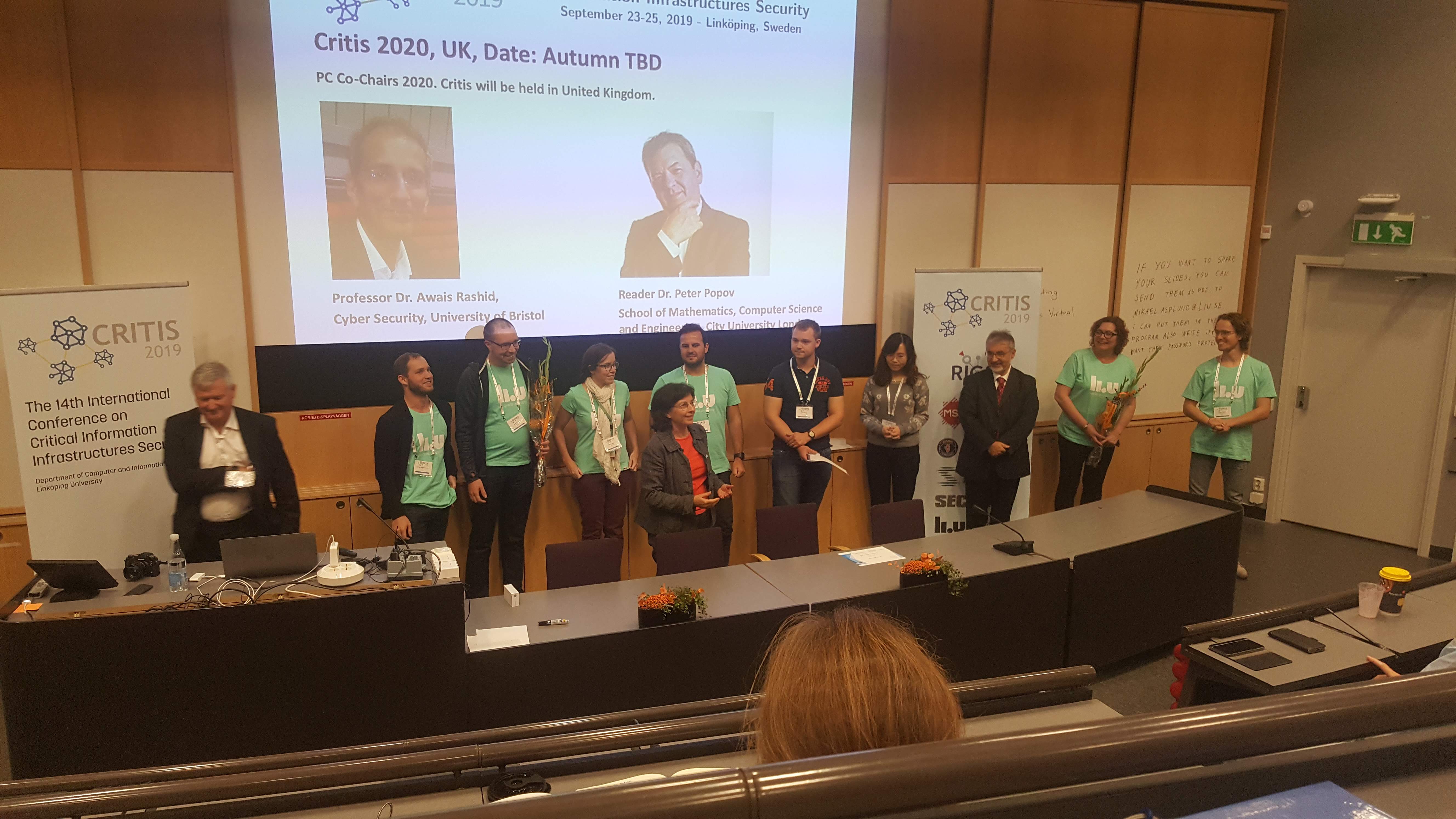
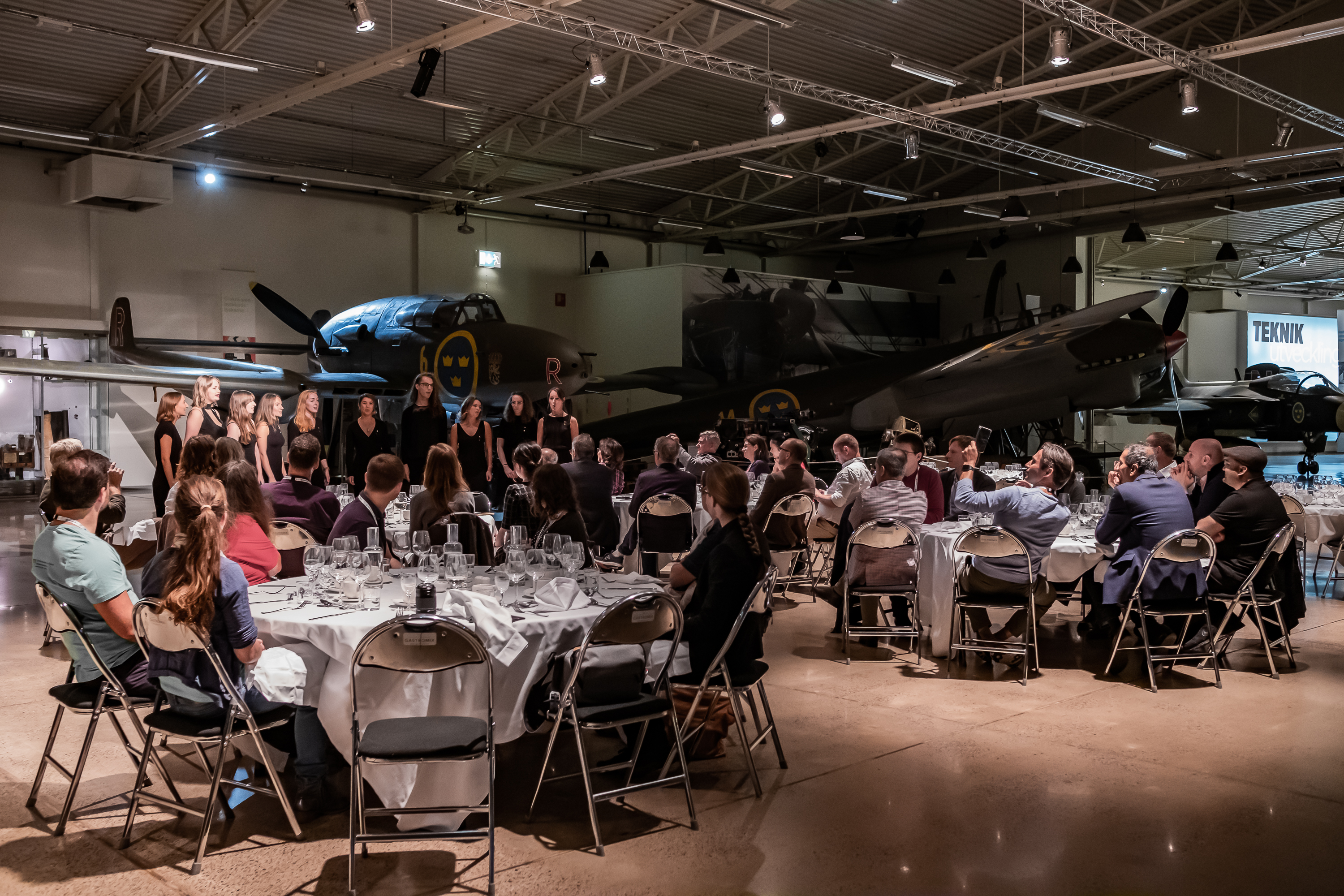
The conference was very interesting and gave me a chance to hear about other work in the area as well as the have many talks with various attendees on a large range of associated subjects. Particularly interesting were those working is gamification on learning strategies which link into my PhD work.
An added and very exciting bonus was that the paper was presented with the Young CRITIS award. The conference process has a rejection rate of 2/3rds of submissions and our paper was stated as a clear winner of the award, which is something I feel proud to have been a part of.
I am hoping to use this method of recording uncertainty in some of the questionnaires for my PhD in terms of capturing the uncertainty of risk, online as experienced by children. I also want to use the capture of uncertainty from the teachers of the children in terms of the skills changes they perceive that the children have experienced.
From my perspective as an Evolutionary psychologist the capture of uncertainty in risk is a very necessary part of the data needed to improve the industry’s ability to predict and assess how both experts and the general population assess risks and consequently respond to them. Using this uncertainty capture can help us to analyse what biases may be influencing decision making and to find methods to mitigate these as we increase individuals’ abilities to accurately predict the probability of the risks effect.
I am pleased that I undertook the PLP I chose and have progressed the work in this way. I am looking forward to working with this method and team in the future.
LINK TO PAPER https://arxiv.org/abs/1910.00703
Digital Places and Virtual Identities
Post by Luke Skarth-Hayley (2018 Cohort)
From the Digital Space, Place and Identity Workshop
What is an academic workshop? As someone coming from ten years in industry I was not sure. I’ve since attended several, and have now led one, which I talk about here. I hope this blog sheds light on what a workshop is, what happens, and how it is useful. I led the workshop with my fellow Horizon students Velvet Spors, Harriet “Alfie” Cameron, and Hanne Wagner.

A workshop is an opportunity to discuss work in progress. It is a chance to engage with researchers who share an interest in the topic. It is also a space to test out aspects of your research. Or you can share a useful skill or working practice that might benefit other researchers. Sharing knowledge and collaborating with other researchers is the best way to think about it.
The four of us delivering the workshop shared some themes in our research. We positioned it as an opportunity to communicate these themes and our ideas within them. We are keen to find potential collaborators, and to build a community around the themes. In the long-term we would like to share works and outcomes via a collaborative virtual space.
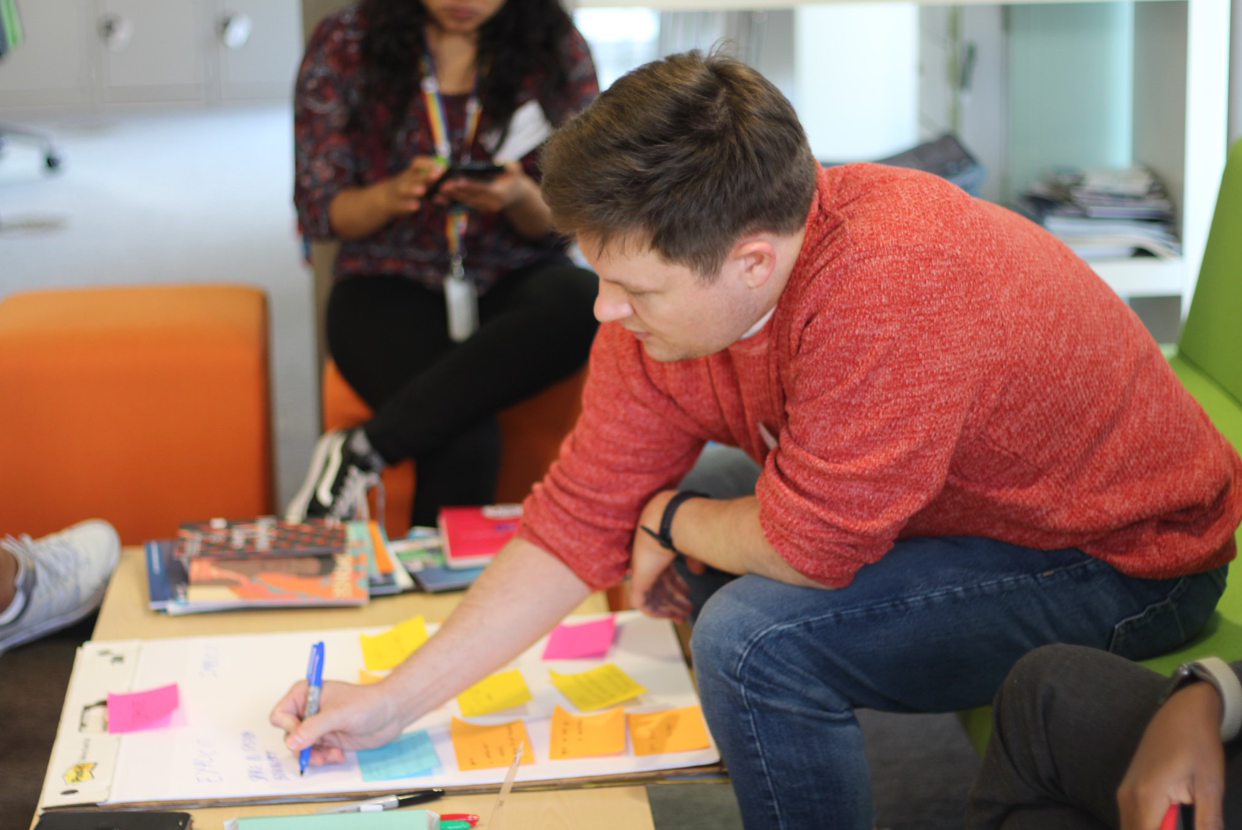
The workshop was for a full day and consisted of a series of activities based around three key themes. These themes were Space, Place and Identity. We sought to examine their use in digital and interdisciplinary research.
My initial understanding of Space, Place and Identity were as follows:
- Space was physical and without human meaning or context impressed upon it,
- Place was Space with meaning impressed upon it, and,
- Identity can apply to Places, groups and individuals. It is multipart, sometimes spatial, and defined by the groups and the Places we inhabit.
- There is a complex relationship between all three, each influencing the others.
Velvet, Alfie and Hanne are more capable of explaining the subtleties of these interrelated concepts. Their parts of the workshop sought to explain and investigate them and related theory further. It was great to watch the interdisciplinary group who joined us discuss and unpick competing definitions.
Velvet introduced the structure of the workshop, setting out the key themes and purposes. They also introduced several icebreaker activities to define the themes. I sat with a group that included an architect, an engineer, a humanist sociologist and a human computer interaction specialist.
For the engineer and architect, space is a bounded subsection of a physical region, with places being the physical buildings and rooms. The humanist sociologist defined space as conceptual, and as specific spaces that contain identities. For example the space of the university contains student and academic identities. This shows that different disciplines have different understandings of the same words. There is always much work to do in reconciling these differences to enable interdisciplinary research.
Alfie provided knowledge of human geography and delivered a session where we had to draw a map of a route we regularly took. This showed how different people conceive of the spaces and places they inhabit and move through. Hanne collated the work that took place in the workshop, summarised it, and presented the group’s call to action and intentions for future work.
I provided a brief introduction to various mainstream, emerging and alternative technologies. I then showed how they served as bases for digital space and identity. This led to discussions of the problems and opportunities in these technologies, and how our research examines or is affected by them. As an example: the dominant paradigm of internet services, such as Facebook, follow the client-server model. The client-server model has many client devices connect to one server. The server becomes a “single source of truth”. There are implicit biases in the client-server model. These may then inform identities and spaces on platforms using it.
I then got people to play space and identity-oriented computer games. My PhD research is into game engines for future media with BBC R&D. The workshop was a useful opportunity to get people to engage with some unusual “games”. Specifically, narrative-focused experiences and those without obvious objectives. It was enlightening to see how people responded. It became clear that computer games need technical, practical, and cultural knowledge. Not everyone has this knowledge, or the means to access it. There are also assumptions in interactivity and the term “game”. Some participants found experiences that lacked clear or meaningful agency confusing.
There was discussion around the value of such experiences as compared to games that are more objective-oriented. There was also comparison to other visual media such as television and film with non-interactive narratives. One experience called Flotsam – playable here: https://candle.itch.io/flotsam – gave two people wildly different experiences. One person’s decisions led to an inspiring phrase that resonated with their research. Another’s led to their being trapped in a place the game warned them against. This led to much discussion, particularly given the two-dimensional and limited colour palette of the game. These limitations required more interpretive “work” compared to “realistic” games, yet somehow gave a more meaningful experience.
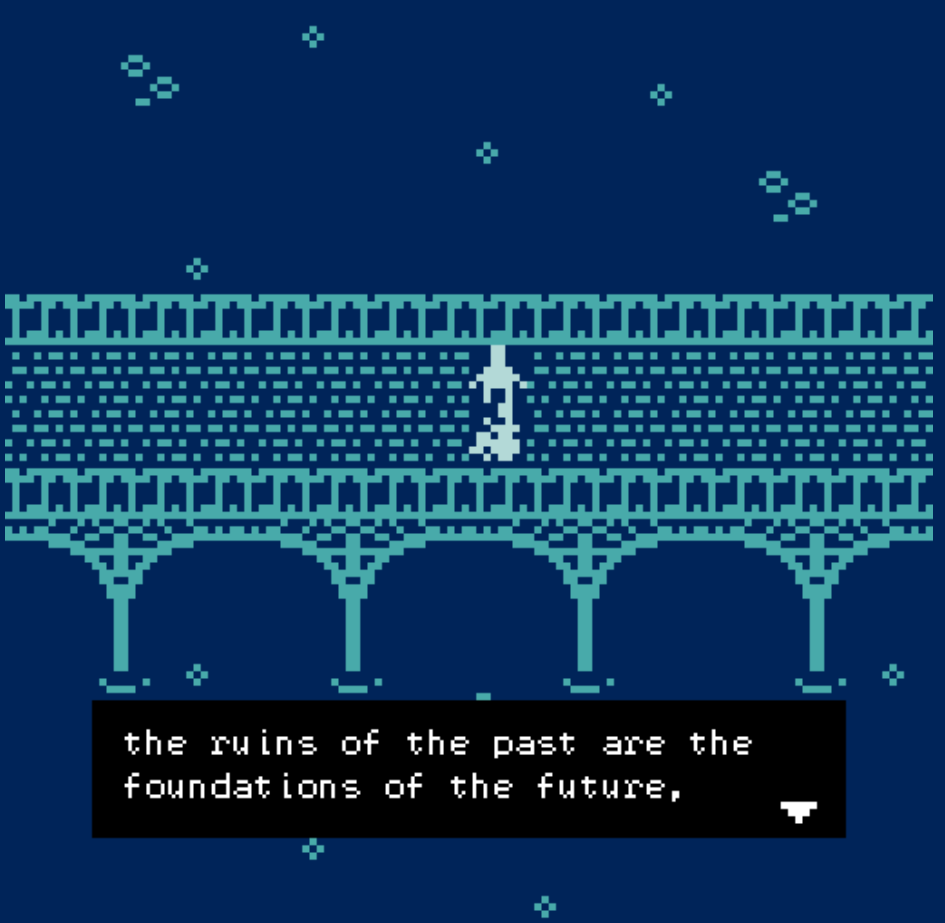
I found the workshop useful on several levels. In practical terms, I have improved my communication, presentation and collaboration skills. The workshop enabled me to engage with varied perspectives. It also allowed me to better understand others’ areas of expertise. Preparing and delivering my part, and the discussions within the whole workshop, gave me much needed clarity in what my priorities are. It is valuable to intensely investigate an aspect of one’s research. This helps to understand what really matters to you, inspires you, and where best to focus your research efforts to make full use of your skills.
Finally, huge thanks to Felicia Black and the Digital Economy Network for supporting our workshop. We are grateful for all the help in making the day run smoothly!
Human Aspects of Cyber-crime and Online Fraud Summer school
Post by Melanie Wilson (2018 Cohort)
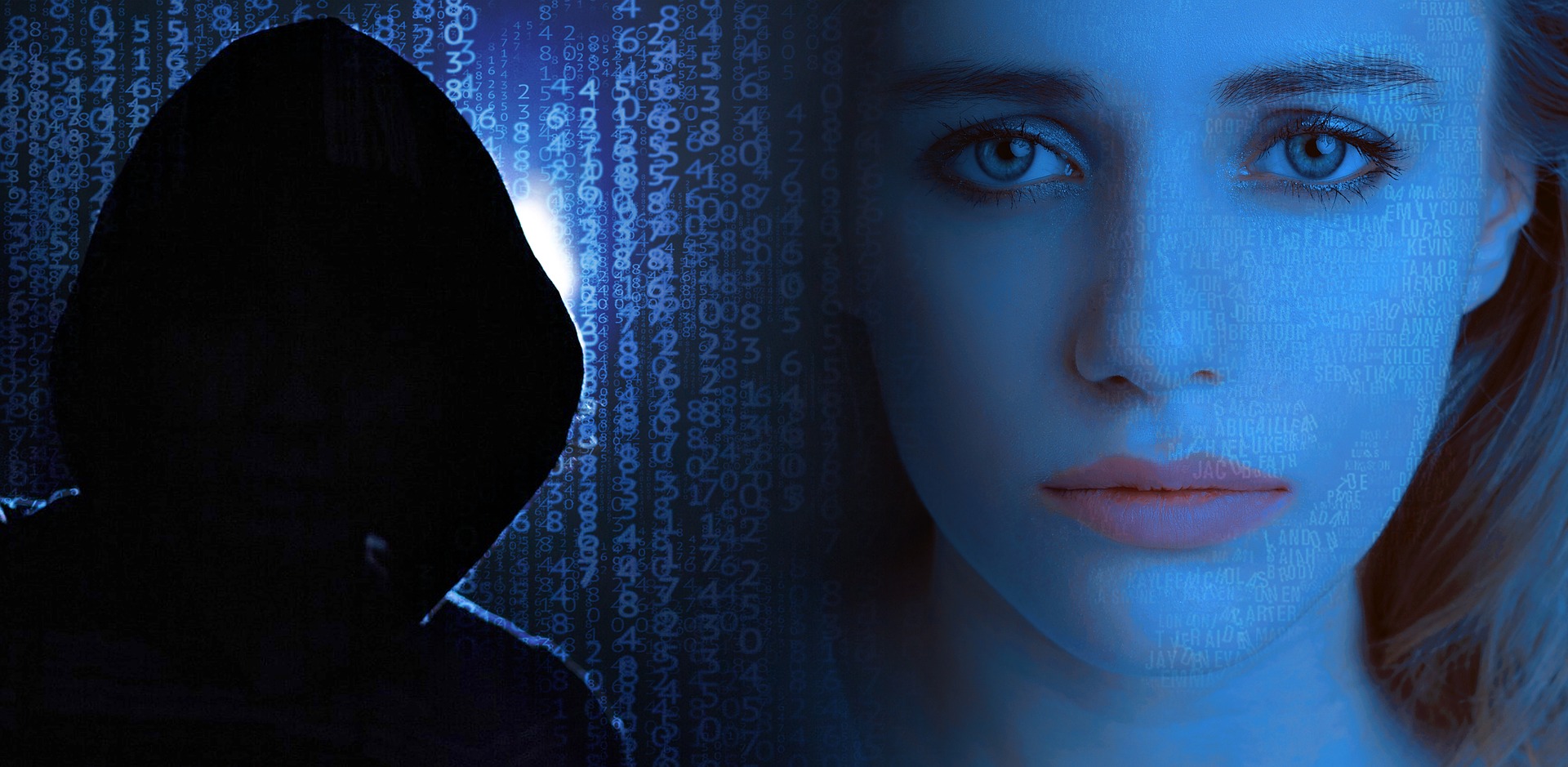
This summer school was presented by Canterbury University in collaboration with the Leicester Castle Business School of De Montfort University, Leicester.
I attended on the Monday & Tuesday of this three-day event, as I had a family commitment on the Wednesday.
The presentations on the Monday were specifically addressing ideas around cyber-crime, social engineering and fraud. These are particularly relevant to me as my PhD is around increasing children’s abilities to identify and resist activities and approaches whilst online. I am addressing these from the perspective of enabling children to recognise attempts from others to engage in social engineering and to have the confidence and personal autonomy to reject anything they feel uncomfortable with, and to seek help where it is needed.
I am working with the Northamptonshire Police cyber-crime team on this and as such have a valuable insight into the challenges they have seen children facing as well as my own perspective as a psychotherapist working with children.
The summer school was the first of its kind to be run at Canterbury University and was led with great enthusiasm and skill by Jason Nurse. The summer school involved people from academia, social enterprise and industry which allowed a large variety of input and ideas to be expressed. Jason was skilful in accommodating discussions within the topics and I found that this approach, rather than the “talked at” approach, was very beneficial. Cyber-crime is a fast-growing field and the traditional approaches of academic study, which often take years to complete, are at risk of being overtaken as both technology and its associated exploitation by criminals proceeds at a rate far outstripping the slower traditional progress of academic work.
I feel this pace change was reflected well in the way the summer school was run. Some of the input could have been improved with more industry input to increase the pace and knowledge of the current challenges further, but I believe that Jason is aware of this and plans to address this in future events.
The first session explored the basics of cyber-crime reflecting on what forms it can take and highlighting how insidious it can be. It addressed the aspects of this area of criminology that are rapidly expanding and exploiting the tools that are available to enhance crime via technological means. One big take-home from this introduction and discussion was how fast this is developing in criminal circles where there are few restrictions and great financial gains to be made. This is at odds with the crime fighters and honest technological industry where there are checks and balances to be met in all circumstances which often results in a slower response which the criminal can exploit.
The Cyber Protect and Prevent Officer for Kent then gave us her perspective on how cyber-crime was affecting policing and the tensions between businesses which often wanted just to solve the issue and move on with business as usual and the desire to pursue cyber-crime as a crime with ramifications for the criminals.
The final session of the day looked at profiling cyber criminals and looking at how these criminals might be led into a perpetrator role. This is particularly relevant to my work because vulnerability leads to both perpetrator and victim activities and the two routes often share common factors.
At the end of the sessions we arranged to meet after dinner in a pub in Canterbury. Doing so was valuable as it provided a relaxed atmosphere in which to talk further with other attendees both about their work and that of others and gave a great deal of insight into the varying field that are involved with this ever-expanding and important field.
Tuesday morning looked at how cyber-crime is often underlined by psychological methodologies that criminals have learnt to use in order to perpetrate their crimes. We explored how social engineering uses a number of methods to elicit cooperation from people, utilising their vulnerabilities and often just their normal desires to help others and be nice. Again, this is an area that I focus on a great deal and feel addressing our ability to say “no” is fundamentally decreasing individuals’ vulnerability to such tactics. There is a noticeable difference in the psychological mechanisms that criminals exploit ruthlessly and the non-criminals’ tendency to trust.
The afternoon sessions addressed the cost to businesses from cyber-crime. It was led by Edward Cartwright from De Montfort University and Anna Cartwright from Coventry University. It addressed business vulnerabilities and the attacks that businesses face daily, and the routes into the enterprise which are often indirect. The conflicts of security and running businesses were highlighted and discussed. The reality of end users often not rejecting companies following a breach and whether reputational damage is as damaging as is often thought. In Anna’s session we looked at the financial motivation for attacks and at what level the attacks and demands became profitable for criminals.
Finally, we looked at the problems and advantages in cyber security that Small and Medium Sized Enterprises face, addressing the challenges of this sector where often there are just a few individuals trying to complete multiple roles.
This summer school was fun. Where a learning experience is fun, lively and open to discussion, I feel far more is gained than from a situation where there is just one voice with very little interaction.
It greatly benefited from a range of perspectives and allowing those to be expressed and discussed. I feel everyone learned something from the variety and range of participants at the event and very much look forward to taking part next year.
Creativity Sandpit with Imperial, Cambridge, and Nottingham
This past May, 28 PhD students from three CDTs based at Imperial, Cambridge and Nottingham participated in a creativity sandpit.
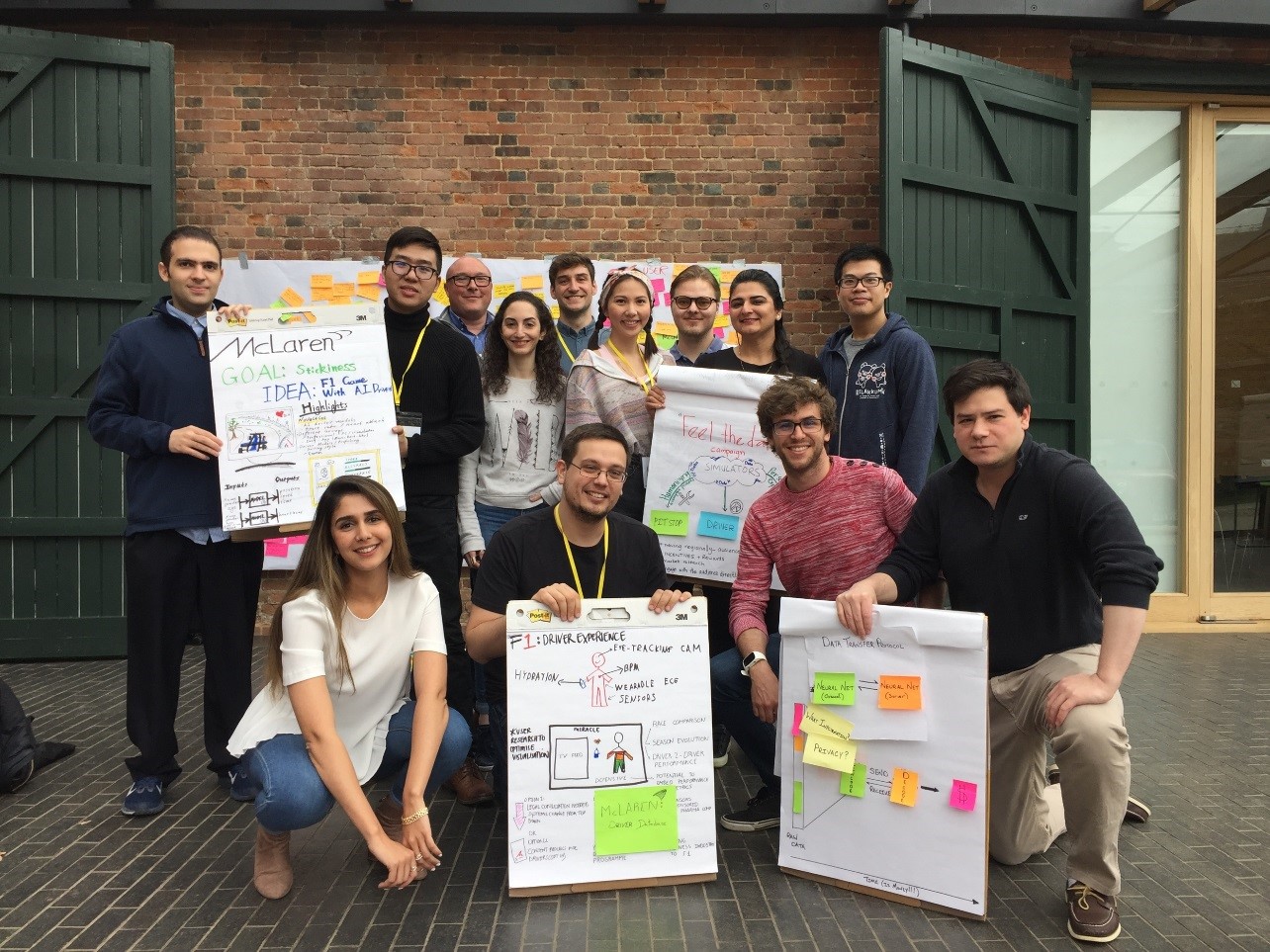
Post by Natalie Leesakul and Shazmin Majid (2018 Cohort)
One of the perks of being Horizon CDT students is the connection with the network of centres for doctoral training led by the Engineering and Physical Sciences Research Council (EPSRC). Through this connection, Shazmin and I took part in a 3-day creativity sandpit workshop organized by Imperial HiPEDS in collaboration with Nottingham Horizon and Cambridge Sensors CDTs. This workshop was quite a unique summer school experience as it was designed for the students to work in a multidisciplinary environment to solve real world industry based problems using the Creative Problem Solving (CPS) framework to help generate innovative ideas. Industry professionals from companies such as a Formula 1 racing team were also in attendance.
On the first day, the workshop started off with various ice-breaking activities, providing the space for the students and industry professionals to get familiarized with each other and learn about others’ backgrounds. Fortunately, as part of Horizon CDT training, we are prepared to do an elevator speech on the spot; hence, giving a quick snapshot of our PhD research was not too difficult. However, the challenging part was discussing the research in more detail with others who have very different backgrounds and skillsets. While Shazmin and I have a background in Psychology and Law respectively, majority of the students are engineers and computer scientists. It was certainly refreshing to hear from a different perspective. Some of the questions and suggestions we got were something that we have not thought of before. Certainly, one of the crucial skills that we have taken away from this experience is the ability to simplify our PhD projects into something that a mixed audience can understand while maintaining engagement in the discussion. This ability to simplify our work in the wild helped us to connect with our own work and really hone in what we are trying to achieve in terms of aims and objectives.
On the second day, after the ice-breaking activities, we went on to learn about CPS and how it can be applied to different projects from the industry to academic research projects. This framework comes in quite handy for doctoral students as our aim is to find the research gap and produce innovative and original ideas to that field of research. This framework is applicable throughout the whole PhD, from the time when we have writer’s block to the time when we have a lot of ideas and not knowing what to focus on. CPS can help in generating the innovative ideas and also eliminating the ‘not-so-good’ ones; it introduces 4 stages of idea developing: clarify, ideate, develop, and implement. During this activity, we were encouraged to discuss with others and to think about our preferences in the process based on our skills. Following the CPS group work, the next activity was to form a team and explore the real-world challenges provided by the industry ranging from Formula 1 racing to drone solution to ad-tech. This was when we needed to put the learned skills together – maintaining a good rapport in a team consisting of people from different backgrounds and applying the CPS framework.
Natalie’s Experience
For the second day activity, I chose a Formula 1 (F1) racing challenge on how to best make use of the existing data in order to gain more fan base. The problem we received was that F1 fan base started to become stagnant, if not declining. Hence, the goal of this challenge was how to attract the new demographics while maintaining the current fan base.
In term of applying the CPS framework to the sandpit challenge, I’ve learned that the stage of clarifying and ideating was my strongest suit. Coming from the business and law background, I’m very comfortable with unpacking the problem, identifying facts, and generating solutions at the abstract level. In contrast, developing technical solution is not part of my practice. Hence, when forming a group to work on the challenge, I looked for others who had the technical expertise. As mentioned before, working in a multidisciplinary team was certainly a challenge on its own. My team consisted of 5 people – our team dynamic ranged from law to marketing to engineering. Certainly, we had a significant competitive advantage over the other teams given the number of people we had on the team and the wide range of expertise. However, the brainstorming session got very messy and unorganized which was problematic as we had to work in a limited amount of time. We started off with shouting out different ideas. Then, we had to choose the most promising idea to further develop which we struggled with quite a bit at this stage.
Thus, this was when we applied the CPS framework. We revisited the challenge objective to truly understand what was the problem we were trying to solve. From that, we looked at the ideas and started crossing out the ones that did not quite answer the question. Once we narrowed down the ideas to a few that we liked, we took on the big picture approach by bringing different ideas under one main solution – starting a promotional campaign for industry wide with the particular racing team as the major driver of the campaign. We arrived to “Feel the data” campaign which was designed to introduce F1 to a new market segment by playing on the FOMO (fear of missing out) trend. We wanted to create the hype around F1 so the idea was to organize a pop-up event at major attraction in the city and then rotate the event to different cities after a few weeks. The pop-up site would include various activities such as driving simulator, pit stop tire changing, and impersonation of driver’s personal engineer. The activities would be designed based on the data of the drivers and their teams in order to create more immersive experience and also incentivize the diehard fans to join the event given that they would gain more insights into their favourite teams and drivers. There would also be a rewards app for the fans to collect points from visiting different sites to win freebies and to vote for the next location of the pop-up site. We hoped this campaign would increase the fan base as it would expose F1 sport to the new demographics and help the crowd understand this sport better.
I found the creative sandpit challenge quite similar to the PhD journey in a nutshell. First, I needed to understand the problem and the root cause of it. Second, I had to explore various solutions in order to find the most optimal one. Third, it was all about how to convey the findings to a wide range of audience. Similarly, a PhD is about understanding the problem, filling in the knowledge gap, and convincing the community of why this project is worth pursuing. At Horizon, we are trained to go broad and expand our research objectives then strategically narrow down the scope to the specific. With that, the ultimate goal is to provide creative and innovative approach to tackle the challenge – just like the industry R&D projects!
Shazmin’s experience
As part of the challenge we received a short brief on the types of data that the racing team were able to show viewers which ranged from car algorithmic outputs to physiological measures of the driver. However, the company were reluctant to deliberate further about the physiological measures of the driver based on the ethical and legal challenges of showing this data on air. After the brief, all members of the summer school were asked to choose the industry challenge they wanted to tackle and then further split into specific teams which tackled the problem from a specific angle. Naturally, as my PhD looks into health markers, I gravitated towards exploring driver physiological data. We ended up being a small team of three, one other student who also had a background in health markers and another more traditional computer science PhD student.
We had half a day to explore the problem with the ability to ask F1 representatives questions, with the plan to pitch our idea to industry specialists in the morning the next day. We brainstormed our ideas using post-it notes and jointly decided which ideas were most feasible. We came to the decision that showing the following types of physiological metrics of the driver could be of interest to fans: heat levels, hydration, and heart rate. We were told that showing specific metrics would result in an ethical and legal problem so instead of showing specific numbers, we thought we could visually show the data in a less identifiable way. For example for hydration levels, we could have an icon of a water bottle with a categorical (potentially 3 categories) indicator of level of fullness. The company showed interest in our initial idea, especially the Director of Engineering who further formulated that our idea could potentially fit into a database that they are trying to make progress with specifically targeted at the Young Driver Programme. We developed our idea further with this information and prepared our pitch in the morning. The “quantified self” is a term that I learned during my PLP which describes the cultural phenomena of self-knowledge through technological self-tracking. Based on my knowledge of this, I was the one to open the pitch by describing this and asking the audience how many people were wearing some sort of wearable tracking device (a large proportion was!) to describe how we as a generation were gravitating towards becoming the quantified self and how our idea was following this trend.
We received very positive feedback from industry experts on our pitch. I have been in touch with the Director of Engineering since the summer school and hope to arrange a visit to the company in the near future.
Reflection on event
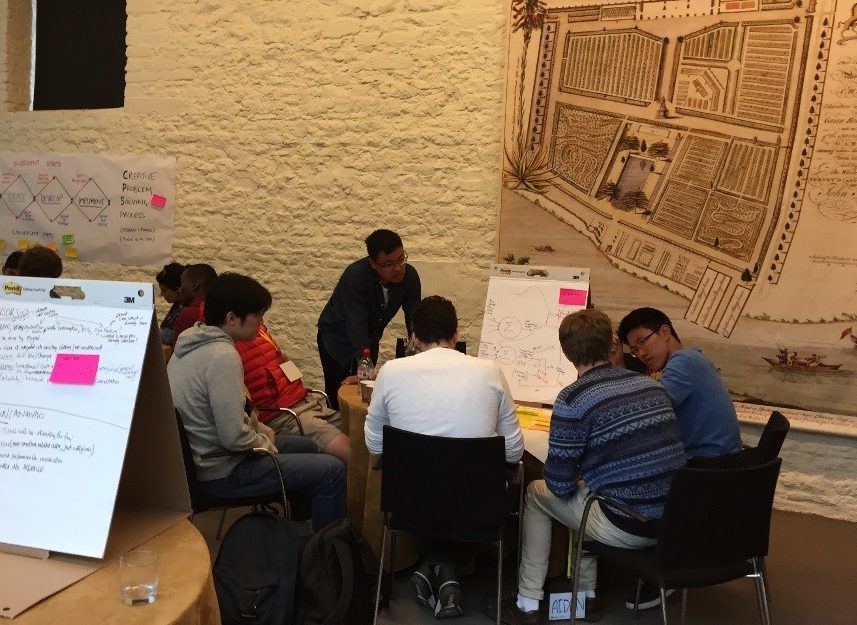
When we were practising how to use CPS, we had to critically reflect on our strengths and weaknesses. Our experiences of group work with Horizon helped us understanding our default behaviours, this allows us to improve ourselves and know what skills that we still lack of and how others can help us out. Because at the end of the day, even though a PhD may feel like a journey of one, in reality, we have a lot of support and it is important to know who and when we should ask for the support. Thus, when forming a team, we were encouraged to look for those who had the skills that we lack to ensure that the team consisted of various skill sets so that everyone had a unique contribution to the team. It was a little stressful at first as we only had the afternoon and the next morning to complete the assignment before presenting it to the industry. Although we were able to generate a lot of ideas, we spent a decent amount of time dwelling on the initial ones that each one of us came up with. This was when the CPS played a big role in helping us filtering out different ideas in order to generate the most optimal solution as a team which we could then develop it further. We were under pressure, however, we had to learn how to work together and liaise with each other in spite of our differences in expertise. Building a good team was definitely a challenge on its own, but it was a very valuable experience. We, as multidisciplinary PhD students, are constantly working with people from different disciplines which it is not always easy. By having more practice working in a diverse team, we have learned to better clarify and communicate our ideas which we can continue to apply throughout our doctoral process.
Last but not least, one of the unplanned bonding activities we (both the students and people from the industry) did together was chasing down the peacocks for pictures – good times!


